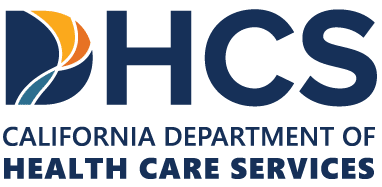Key Takeaways
- Prazosin is good at reducing nightmares and improving sleep quality, both of which are key for mental health recovery.
- Prazosin works by blocking alpha-1 adrenergic receptors, which reduces symptoms like nightmares and anxiety.
- Most patients find that they sleep better and have fewer nightmares within the first couple of weeks of starting prazosin, but it’s important to keep taking it regularly for the effects to continue.
- Prazosin doses range from 1 mg to 16 mg per day, with adjustments based on symptom severity and individual response, starting at low doses to minimize side effects.
- Prazosin is usually well-tolerated, with mild side effects like dizziness or drowsiness that often get less over time.
What is Post-Traumatic Stress Disorder (PTSD)?
Post-Traumatic Stress Disorder (PTSD) is a mental health condition that affects how a person thinks, feels, and behaves. This disorder often involves symptoms like flashbacks, nightmares, and severe anxiety—making it difficult for individuals to perceive reality accurately.
Prazosin for PTSD is somewhat more specific. It’s a medication originally developed for high blood pressure that has found use in treating PTSD – particularly effective in reducing nightmares.
People with PTSD who take Prazosin experience fewer nightmares and improved sleep, which are crucial for overall mental health recovery. Because of its targeted action on PTSD symptoms, Prazosin is an important part of the treatment plan. 1
| A Mission For Michael: Expert Mental Health Care Founded in 2010, A Mission For Michael (AMFM) offers specialized mental health care across Southern California, Washington, and Virginia. Our accredited facilities provide residential and outpatient programs, utilizing evidence-based therapies such as CBT, DBT, and EMDR. Our dedicated team of licensed professionals ensures every client receives the best care possible, supported by accreditations from The Joint Commission and the California Department of Health Care Services. We are committed to safety and personalized treatment plans. Start your recovery journey with AMFM today! |
Causes of PTSD
Research shows that many factors can play a part in this complex mental health condition.
Genetics are an important factor, as PTSD often runs in families—however, having a family member with PTSD does not necessarily mean an individual will develop it themselves. 2
Environmental factors also play a role—experiences such as exposure to warfare, serious accidents, or violent personal assaults can increase the likelihood of developing PTSD. Prolonged exposure to stress during childhood or significant life stresses after trauma are particularly impactful.
Research has also found that people with PTSD often exhibit differences in brain structure and function. For instance, some individuals may have variations in the size of certain brain areas or in the connections between them, which may affect how they process information and emotions.
Symptoms of PTSD

PTSD can affect people in different ways, but it usually impacts a person’s emotional stability, memory, perception, and overall ability to function. PTSD symptoms are primarily related to the experience of trauma but can also include broad emotional and psychological distress. 3
Common symptoms of PTSD include:
- Re-experiencing symptoms (e.g., flashbacks, nightmares, and intrusive thoughts about the traumatic event)
- Avoidance symptoms (e.g., avoiding places, people, or activities that remind the person of the trauma)
- Negative changes in thinking and mood (e.g., pervasive negative thoughts about oneself or others, persistent feelings of fear or anger, feelings of detachment from others)
- Arousal and reactivity symptoms (e.g., being easily startled, feeling tense, difficulty sleeping, and having angry outbursts)
Types of PTSD
While PTSD is recognized as a single disorder, it’s often categorized into different types based on how symptoms present and the duration of trauma exposure. 4
- Acute Stress Disorder (ASD): The main symptoms of ASD are similar to those of PTSD, but they happen straight after a patient experiences a trauma and usually get better within a month. Patients might have flashbacks, nightmares and feel more anxious. If symptoms last more than a month, ASD can turn into PTSD.
- Complex PTSD (C-PTSD): This type of PTSD can be caused by ongoing or repeated trauma, such as abuse or being held captive. Other the main symptoms of PTSD, patients may find it hard to control their emotions, feel hopeless and have trouble getting close to other people.
- Comorbid PTSD: Comorbid PTSD occurs alongside other mental health conditions, like depression or anxiety. The combination of disorders can intensify symptoms and complicate treatment, requiring a comprehensive, multi-faceted approach.
- Delayed-Onset PTSD: Symptoms of delayed-onset PTSD may not appear until months or even years after the traumatic event. This type can emerge when initial coping mechanisms break down or new stressors bring unresolved trauma to the surface.
Prazosin & How It is Used for PTSD

Prazosin is a medication originally developed to treat high blood pressure, but is now commonly used off-label to manage PTSD symptoms, particularly nightmares and sleep disturbances. By targeting alpha-1 receptors in the brain, prazosin reduces the hyperarousal that contributes to nighttime PTSD symptoms.
Prazosin is effective in decreasing the frequency and intensity of nightmares, improving overall sleep, and alleviating daytime fatigue and irritability. It’s especially beneficial for veterans and individuals with severe trauma-related sleep issues. Prazosin is widely prescribed because it has a favorable side effect profile and can be combined with other treatments, such as therapy or antidepressants, for comprehensive PTSD care.
How Prazosin Works
Prazosin works by blocking alpha-1 adrenergic receptors, which reduces the activity of norepinephrine, a neurotransmitter involved in the body’s stress and “fight or flight” response. This mechanism helps lower hyperarousal symptoms commonly linked to PTSD, such as nightmares and heightened anxiety. 6
Prazosin’s ability to inhibit norepinephrine helps calm the body’s physiological response, promoting better sleep quality and reducing nighttime disturbances. Unlike some medications, prazosin primarily targets alpha-1 receptors and doesn’t affect receptors associated with sedation or weight gain – thus, minimizing the risk of metabolic side effects.
Prazosin’s Effects on PTSD
Prazosin can be very good at reducing the most common symptoms of PTSD, especially by making nightmares less common and improving sleep quality. Prazosin helps to calm the body and reduce nighttime hyperarousal, making it easier to sleep. This improvement in sleep often makes people feel less anxious during the day, happier, and better able to deal with daily activities and stress. 7
How Long Prazosin Takes to Work
Patients often notice improvements in sleep quality and a reduction in nightmares within the first two weeks of starting prazosin. In some cases, it may take longer for significant changes to appear, depending on individual factors and symptom severity. 8
For many, consistent use is essential to sustain the therapeutic benefits of prazosin. Adhering to the prescribed dosage and schedule is critical for maximizing results and ensuring long-term symptom relief.
Prazosin Doses
Prazosin is typically prescribed in doses ranging from 1 mg to 16 mg per day, depending on the severity of PTSD symptoms and the patient’s response. Most patients start with 1 mg at bedtime to minimize initial dose syncope, with the dose increased to 2 mg after 2 to 3 days. Further increases of 1 mg every 2 to 7 days are made based on response and side effects. The target dose for many patients is 6 mg to 10 mg per day, though higher doses may be required for veterans or those with complex PTSD. The minimum effective dose is always the goal, with response typically observed between 1 mg and 16 mg. 9
Possible Side Effects of Prazosin
Prazosin is generally well-tolerated, with most individuals experiencing few side effects. Common side effects include feeling sleepy, dizzy, headache and sick. These effects are usually mild and tend to get weaker over time as the body gets used to the medicine. Prazosin has little effect on weight and metabolic parameters, which makes it a good choice for patients who are worried about weight gain or metabolic disturbances that are caused by other medications. 10
Take the Next Step Toward Better Mental Health

At A Mission for Michael, we understand that living with PTSD and other mental health conditions can be challenging. That’s why we offer 24/7 personalized care in a supportive, home-like environment where individuals can focus on healing and recovery.
Our approach combines evidence-based therapies, including Cognitive Behavioral Therapy (CBT) and trauma-focused treatments, with lifestyle adjustments to help individuals regain control over their mental health and improve their overall well-being.
If you or someone you care about is in need of support, our team is here to assist. Reach out today to learn how our holistic, personalized approach can make a lasting difference. Together, we can take the first step toward recovery.
Start your recovery journey with AMFM today.
Frequently Asked Questions (FAQ)
What is Prazosin, and how does it help with PTSD?
Prazosin is a medication originally developed for high blood pressure. It’s now commonly used off-label to treat PTSD symptoms like nightmares and sleep disturbances by reducing hyperarousal and promoting better sleep.
How does Prazosin work in the body?
Prazosin blocks alpha-1 adrenergic receptors and lowers norepinephrine activity. This reduces the heightened stress response that causes nightmares and nighttime anxiety in PTSD.
How long does it take for Prazosin to work?
Most people find that they sleep better and have fewer nightmares in the first couple of weeks of treatment, but you must keep using it if you want to continue benefiting from it.
What are the typical doses of Prazosin for PTSD?
Prazosin is typically prescribed in doses ranging from 1 mg to 16 mg per day, with initial dosing starting at 1 mg at bedtime and gradually increasing based on the patient’s response and tolerance levels.
What are the potential side effects of Prazosin?
Common side effects include drowsiness, dizziness, headaches, and nausea, which are typically mild and decrease over time. Prazosin has minimal impact on weight or metabolism, making it a preferred option for many patients.
Resources
- https://www.psychiatry.org/patients-families/ptsd/what-is-ptsd
- https://pmc.ncbi.nlm.nih.gov/articles/PMC2680188/
- https://www.who.int/news-room/fact-sheets/detail/post-traumatic-stress-disorder
- https://www.mayoclinic.org/diseases-conditions/post-traumatic-stress-disorder/symptoms-causes/syc-20355967
- https://pmc.ncbi.nlm.nih.gov/articles/PMC8169333/
- https://www.researchgate.net/publication/230784873_Prazosin_for_the_Treatment_of_Nightmares_Related_to_Posttraumatic_Stress_Disorder_A_Review_of_the_Literature
- https://pmc.ncbi.nlm.nih.gov/articles/PMC6986268/
- https://keltymentalhealth.ca/r/prazosin-minipressr
- https://rightdecisions.scot.nhs.uk/tam-treatments-and-medicines-nhs-highland/adult-therapeutic-guidelines/mental-health/prazosin-for-ptsd-related-nightmares-guidelines/
- https://www.mayoclinic.org/drugs-supplements/prazosin-oral-route/description/drg-20065617












